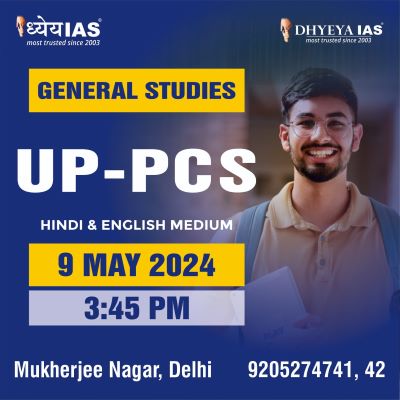(Daily News Scan - DNS English) International Literacy Day - 8th September
Important Points:
“Education is a liberating force, and in our age it is also democratizing force, cutting across the barrier of caste and class, smoothing out inequalities imposed by birth and other circumstances”. Indira Gandhi
Literacy is fundamental to learning; it is the essential foundation of education. It is a tool for daily life in modern society, a building block of development and a vehicle for promotion of cultural and national identity.
To highlight the importance of literacy to individuals, September 8 was proclaimed as International Literacy day by UNESCO. Every year since 1966, 8 September marks UNESCO’s International Literacy Day. This day aims to raise awareness globally on the issues surrounding adult and child literacy.
The idea of an International Literacy day was introduced at the World Conference of Ministers of Education on the Eradication of Illiteracy in the year 1965. Along with celebrating the Literacy day, UNESCO also announces its International Literacy Awards. This award helps in promoting awareness of the importance and relevance of literacy and adult learning.
On this day the Director General of UNESCO address a message to the world appealing every individual to give support for spreading literacy and education in the world. For each year a theme is dedicated, with last year’s theme being Literacy and Skill Development. 2019’s theme will focus on Literacy and Multilingualism. With this year’s theme it will provide an opportunity to rethink the fundamental importance of the language and its diversity for both the individuals and the society.
The main characteristics of multilingualism in today’s globalized and digitalized world will be discussed during the event. It is an opportunity to reflect on policies, system and practices required to promote literacy in a multilingual context.
Quality education is a part of Sustainable Development Goal, where it aims to ensure the completion of primary and secondary education for all boys and girls and guaranteeing equal access to opportunities for access to quality technical and vocational education for everyone by 2030.
If we look at the literacy rate of the world, around 750 million people cannot read and write, out of which 2/3rd population is of women and around 100 million children of the world do not have access to school. The global literacy rate is 86.2%. To understand literacy we need to first understand how literacy is measured.
A person aged seven or above who is able to read and write, with the ability to understand in any language is said to be literate. Whereas, literacy rate is defined as the total percentage of population of an area at a particular time aged seven years or above who can read or write with understanding. If we observe the development of India in literacy we can see that - After attaining Independence in 1947 from the British, India’s literacy rate was only 12%. Over the years, the government has worked hard to promote education and the importance of literacy in the country. After 2011 CENSUS, literacy rate in India has reached upto 74.04%. In India CENSUS, is the source provider of information regarding Demography, literacy and education and demographic data since 1872. If we consider the female literacy in India it is still lagging behind with 65.46% and for men it is 82.14% in 2011.
Literacy in India has been increasing as more people are obtaining better education. The government is committed to provide access to quality education of all sections of society. Literacy has always been a matter of concern but many NGO and government initiatives like ads and campaigns have helped to spread awareness among people about it.
The Ministry of Human Resource Development has implemented various schemes aiming to enhance literacy and basic education in the country. In the year 2002 the government declared free and compulsory education as a fundamental right to all children in the age group of 6-14 years.
The schemes like Right of Children to Free and Compulsory Education Act 2009, Sarva Siksha Abhiyan aim to improve school infrastructure, teaching and learning for better learning outcomes. Beti Bachao, Beti Padhao is also one the important schemes which focuses on preventing the girl foeticide and ensuring her education. For higher education schemes like Rashtriya Ucchatar Siksha Abhiyan, Global Initiative for Academics Networks and National Digital Library have been brought up to improve quality of higher education.
With the provision of various schemes, India is still lagging behind in achieving high rates of literacy after so much of efforts of the governments and of NGO’S and individuals. It is because it is the 7th largest country in the world with 2nd largest populated country after China. The number of schools and education centers are still very less in number as compared to the population especially in rural areas. Many of the people are still not aware that children can get free education from the government.
To bring our nation forward we as individuals need to put in effort to eradicate illiteracy from our nation. Some development efforts like revamping the teacher education system, developing centres of excellence for teachers education work on expanding the idea of good education as well as extending the scope to include pre primary education in the Right to Education Act (which is not in all states) is required for taking our country a step forward towards attaining full literacy.























